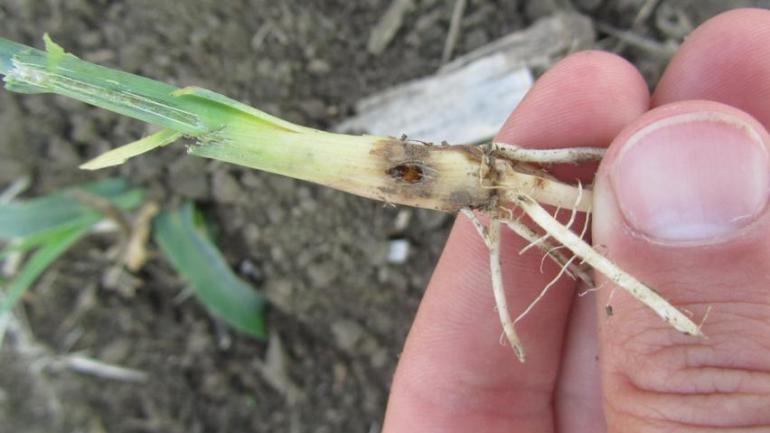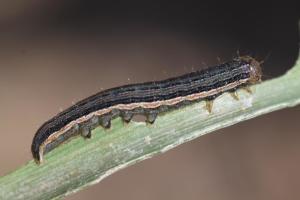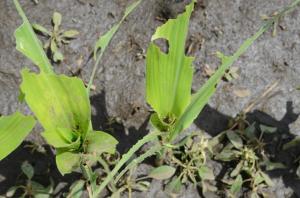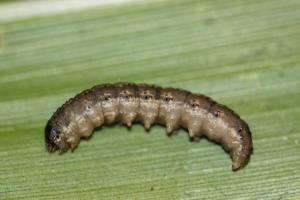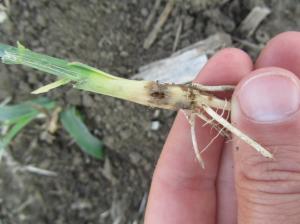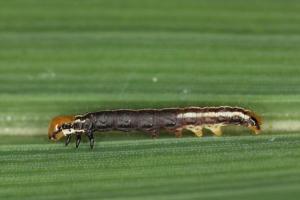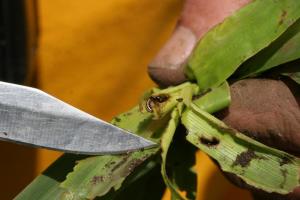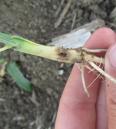Landscape diversification, including the use of cover crops, can provide habitat and forage for beneficial insects. This is especially true in the spring when there is a lack of food. Alternatively, cover crops can also support field crop pests, including moths, beetles, flies and slugs. The early spring vegetation, sometimes called a “green bridge,” provides resources until the row crops emerge. In the past, several green bridge pests have become common in Iowa.
True armyworm
Biology: widespread U.S. pest that migrates to Iowa annually; 2-3 generations each summer; females attracted to grass and lay egg masses in aggregated areas.
Injury: caterpillars are mobile and nocturnal; young caterpillars skeletonize leaves but leave the midrib behind; older caterpillars can consume leaves; VE-V5 corn and V(n) soybean is most susceptible; significant stand loss is possible.
Black cutworm
Biology: widespread U.S. pest that migrates to Iowa annually; 2-3 generations each summer; females attracted to green vegetation lay eggs randomly.
Injury: caterpillars are mobile and nocturnal; caterpillars defoliate leaves and tunnel in plant, and are capable of cutting seedlings at soil; VE-V7 corn and V(n) soybean is most susceptible; significant stand loss is possible.
Common stalk borer
Biology: widespread U.S. pest that overwinters in Iowa; 1 generation each summer; females randomly lay eggs along ditches in fall.
Injury: caterpillars are mobile; young caterpillars infest grass and older caterpillars infest corn, soybean and ragweed; V5-V10 corn and V(n) soybean is most susceptible; significant stand loss is possible but aggregated at field edges.
How to scout for pests in cover crops
- Walk through fields and note defoliated, clipped or shredded leaves; and dying, dead or missing plants
- Look for frass pellets and webbing in and around plants
- Dig around plants, move debris, pull plants, spilt stalks and look in soil crevices
Originally posted by Iowa State University Extension and Outreach

